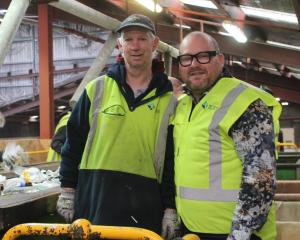The proof could be in the fritter in September.
On one side will be whitebait freshly caught from the country's rivers.
On the other, probably, the country's first farmed whitebait.
But which will taste better, cost less and be more plentiful?
A branch of the Manukau Institute of Technology, Enterprise MIT, has successfully bred the five species of native whitebait and has high hopes it can deliver its first commercial crop this spring.
Enterprise MIT manager Paul Decker was wary of creating too much expectation, but told the Otago Daily Times yesterday he and other shareholders in the venture had had some ''exciting success that makes it certainly look commercially viable''.
''We've got breeding stock. We've bred whitebait. We've eaten them.''
''But can we produce enough for a commercial scale-up?''
He believed the answer would come in September.
''We won't have a big tonnage, but we'll certainly have more than a couple of kilos.''
One of the biggest commercial whitebait operators is Cascade Whitebait.
Shareholder Nanette Buchanan said if farming was proven to be commercially viable, it would affect the price of whitebait.
''It will be interesting to see just how much of a goer it is, and which variety of whitebait he can actually grow, Ms Buchanan said.
''There are different varieties, and the consumer likes some varieties better than others.''
When told the most promising species was giant kokopu, Ms Buchanan said: ''That's the one that a lot of customers say, 'Er, I don't like that'. It's a great big one, and sometimes it even gets returned, or gets a lower price.''
Mr Decker said Ms Buchanan's remark showed a ''commercial bias'' because whitebait were only three months old when caught and it was difficult at that stage to tell the difference between the five species.
''Unless you really, really know what you are looking for ... you can't tell when they are at the whitebait stage really what fish they are.''
Mr Decker said the main advantage of the giant kokopu was that it lived for 30 years and was therefore more suitable as breeding stock.
The work began as a conservation effort because four of the five whitebait species were endangered and were expected to be gone in 20 years, Mr Decker said.
He believed commercial whitebaiting would be consigned to history, one way or another.
''Your days are numbered. You can't keep shooting kiwis.''
Ms Buchanan said she did not believe wild populations of whitebait were as depleted as some people thought.
''It's just that there are a lot more people catching them than what there used to be.
''I think they would do better to limit the amount of whitebait people can get for a feed.''
However, she wished the whitebait farmers ''good luck''.











